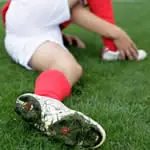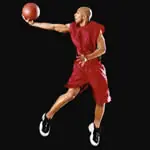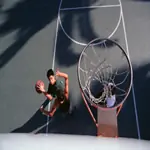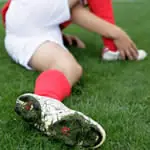You must also practice shutting down your conscience to activate your cerebellum. Physical mastery won't work in crunch time unless you practice mastering the shutting down of your thoughts as you shoot. There are several ways to practice both the physical and the mental aspects of shooting free throws:
Physical Practice
•Practice with Adversity -- Crowd noise, trash talk, cheerleaders, people walking behind the basket, sudden noises behind you during the shot. Use anything that could cause the player to be distracted, including laughter or even anger.
•Practice with Consequence -- Sprints, pushups, wall squats, crunches, negative points, plus/minus games, extra form drills before the next shot, loss of turn, start over, anything that causes making that particular shot to be important. (But you should be ready to shoot again in a few seconds.)
•Practice with Realistic Repetition - Shoot 10 at a time up to a total of 100 at a time to learn. Make one at a time and stop, get off the line for at least 30 seconds, and do this 25 times to become a good free throw shooter. Make two in a row and stop, get off the line for at least 30 seconds, and do this 50 times to truly master making the big shot.
•Want more? Only count swishes. If the ball hits the backboard or rim it doesn't count (even if it goes in). It must be "all-net" to count. Also, practice making free throws with your eyes closed. This is not to impress your friends but serves to groove in your stroke both physically and mentally.
•Make two shots in a row. The first must be all-net. The second must be made with your eyes closed. Repeat and do 10 sets of making both shots. Do this with adversity and consequences and you will find yourself shooting in the 90-percent range.
Mental Practice
•Create your personal mantra moment cerebellum trigger. This gives you the best chance of shutting down your consciousness, allowing your cerebellum to kick in and allow auto pilot muscle memory to take over and make the free throw. Have just one feeling or visual queue. Try not to use words, but if you must, use only one holistic word, for example -- "swish." It's better to choose something like the feel of the ball as you bounce it at the line be your trigger. The absolute best trigger could be the rim itself. Train yourself to use the feel of the ball, or the sight of the rim, or whatever you choose to hyperfocus your cerebellum into action.
•Practice losing yourself in the feeling of the ball or whatever you choose for your trigger. The only thing in the world that exists is your trigger. Practice the feeling that when you look up and see the rim you are ready to shoot. The most important part of your free throw is your hand releasing the ball up and toward the basket. The most important part of that action is getting the ball to roll off your index finger and middle finger last. This must become a comfortable and very familiar feeling through practice. Get that feeling each time you bounce the ball before a free throw. "Shoot the ball to the floor," letting it roll (with backspin) off your fingers as if it is the free throw shot. The only thing you feel is the ball rolling off your fingers. The only thing you see is the ball spinning as it goes towards the floor. Try to hear the sound of the ball moving in your hand. Then just shoot.
•Stay off the line until the official/practice partner is ready to give you the ball. When you are practicing on your own, stay off the line until you are ready to shoot. When you step up to the line, immediately start your cerebellum trigger and shoot. There is no shot to make. There is no score, no clock, no teammates. There are no fans, opponents, victory to gain or loss to fear. There is no past or future. The only thing that exists is your trigger.
Gametime and Crunchtime
Practice with adversity and consequence, make all net shots and shots with your eyes closed, and use a mantra moment cerebellum trigger to make more free throws. But understand that no matter how much you prepare or practice, shooting a free throw is still a random act.
According to Svoboda's article in Scientific American Mind, that does not mean a regimen of practice that includes developing mantra moment cerebellum triggers is not worth undertaking. The most effective strategies for handling pressure and avoiding choking, notes Trinity University psychologist Harry Wallace, are also the ones that imbue performers with the assurance that they can deal with any eventuality. Wallace also says. "You want to address any concerns far in advance of performance." To make free throws in crucial situations of a basketball game, you can only be as prepared as possible to succeed, which includes allowing your cerebellum to take over without conscience interference.
Practice to get to point where it just happens, it just is. You already function this way and you always will. It's how your brain works, and if you accept it, you can unlock the power of you brain, utilize the benefits, and make more free throws.
- 3
- of
- 3






Discuss This Article